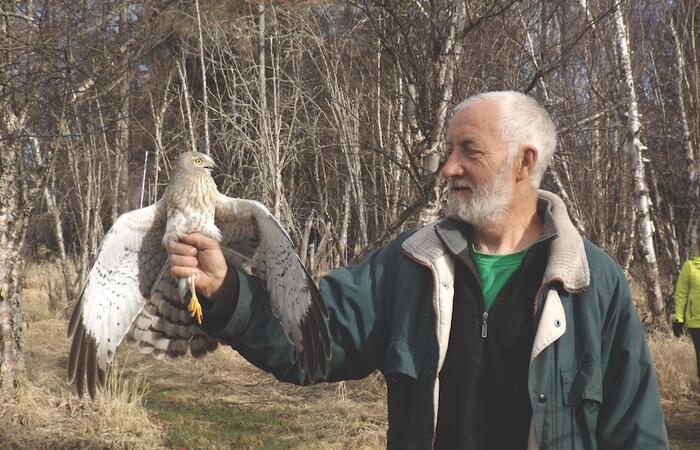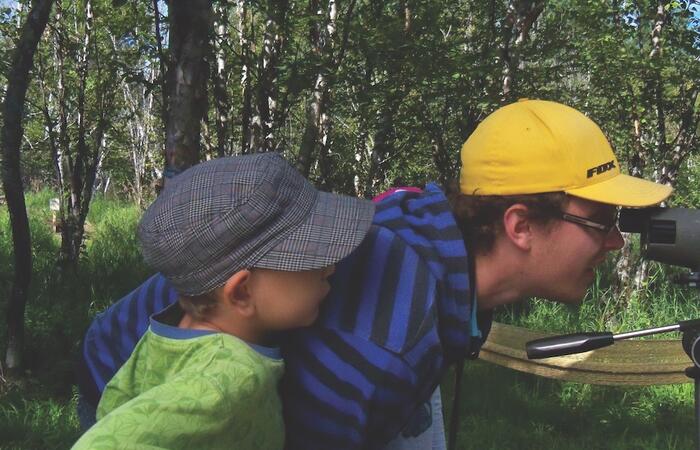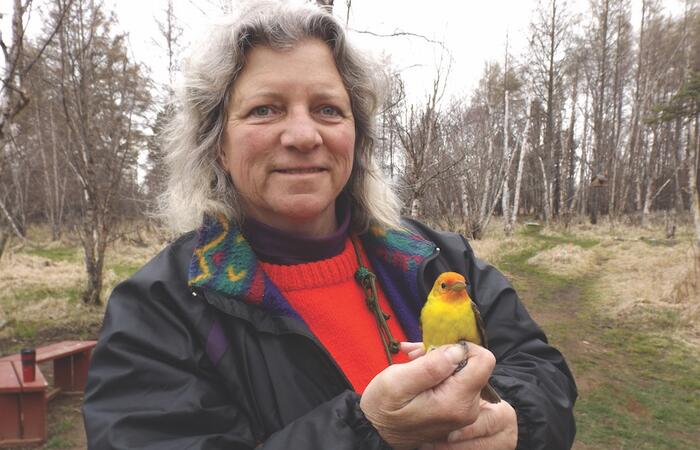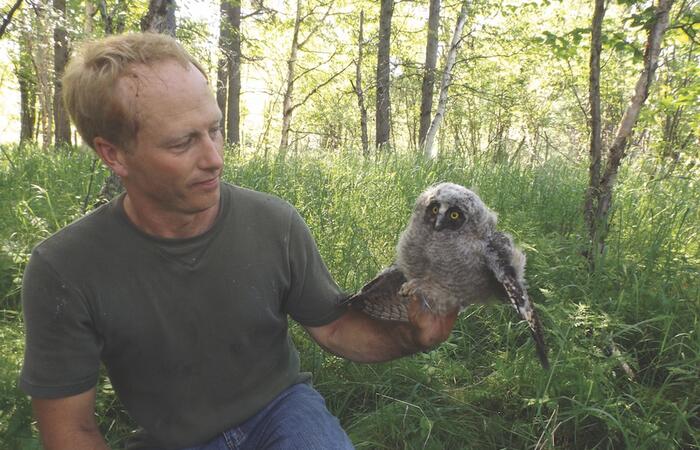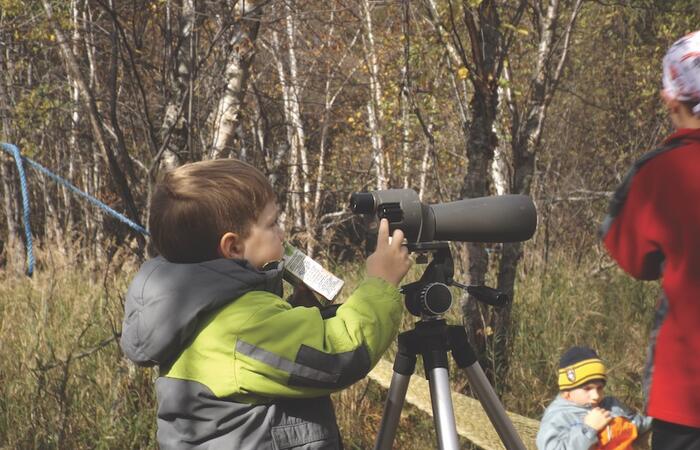Thunder Bay hosts many visitors and guests during the summer months, travellers from all over the world including South America, United States, and Mexico; some in colourful plumage, others in natural tones and stripes of black, brown, white, and grey.
What? Plumage? Stripes of black, brown, white, and grey? Yes. We’re not talking people here. We’re talking birds.
Every spring Thunder Bay’s sky fills with birds as they return for their short 5 month visit to nest, raise their young, and prepare for that long journey home. We often think of the sparrows and finches and swallows as “our birds”, but really, they’re only seasoned travellers who like to use Thunder Bay as their summer retreat.
John and Maureen Woodcock know this very well. And if there’s anyone who gets to see the birds up close and personal, it’s them. John is an ornithologist, while his wife, Maureen, is an assistant biologist. Together they have years of experience.
For the months of May, August, September, and October, John and Maureen visit the McKellar Island Bird Observatory and net, band, and record information about the birds that visit this natural habitat just minutes from the city.
Using netting much like badminton netting, the Woodcocks are able to capture and release birds without injuring them, and learn of their migratory habits and record their population growth or decline.
The area is, well, pardon the expression, made “for the birds”.
“We’ve done many things to the area to improve the habitat,” John says. “We’ve planted over 400 trees and seeded many different types of plants to encourage both birds and butterflies to visit, and set up 18 bird houses to give the birds a safe home for the summer nesting period.” Because the area is overpopulated with deer, they’ve focused on bringing “deer-resistant” plants like hyssop, milkweed, and lupins onto the island as well.
And they’ve done many things to encourage “people visitors”, including providing picnic tables, lovely trails to walk on, and one-on-one experiences to get to know the birds up close and personal.
When a bird is caught in a net, Maureen and John gently remove it and quickly place a band on its leg. A tally is kept of each species of bird and quick observations are made including the bird’s sex and health. Then the bird is released with no harm done.
As of this date, 154 species of birds have been observed and 99 species have been banded on the island. Every bird including geese, ducks, teal, loons, pelicans, herons, vultures, eagles, hawks, cranes, owls, doves, kingfishers, woodpeckers, flycatchers, shrikes, jays, swallows, chickadees, wrens, bluebirds, robins, warblers, sparrows, juncos, grosbeaks, orioles, crossbills, redpolls, and hummingbirds have either made their home on the island or at least stopped to visit for a while.
John and Maureen encourage guests of the two-legged, non-winged kind to the island to take part in the banding and recording procedures.
“It’s a wonderful experience to place a bird in a person’s hand and let them feel its soft feathers, watch it breathe, and take in every tiny detail and then let it fly away,” John says. Children, he says, are especially transfixed during this rare opportunity to see nature up close.
But there has been a decline in the bird population over the past years.
Fifty percent of the birds raised here in North America don’t make it through the winter. For insect-eating birds it’s due to the use of pesticides while for all of the birds migrating and visiting unfamiliar places during their journey south, it is because of our four-legged, soft and cuddly, but ever-so-predatory, house cats. “House cats are the number one reason for bird deaths,” John states. “Not tall office buildings with clear glass windows, or other predators, but our beloved cats.” He noted that people can provide an alternative for their pets by creating an enclosed, outside area that keeps their felines away from birds.
With winter here, the McKellar Island Bird Observatory is much quieter and John and Maureen are taking a little rest from their summer duties but they encourage people to think about visiting them when spring rolls around. It’s a wonderful experience to see how birds are captured, banded and then released. It’s also a chance to learn about birds from the experts and take some excellent photos. The cost is free, except for special event days, and donations are gratefully accepted.
For more information you can visit the McKellar Island Bird Observatory facebook page at www.facebook.com/mckellar.
McKellar Island Bird Observatory is a project of the charitable organization “Save Our Songbirds” and is managed by John and Maureen Woodcock on land leased from Husky Energy. They are full members of the Canadian Migration Monitoring Network.

